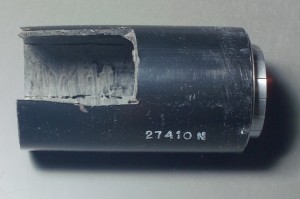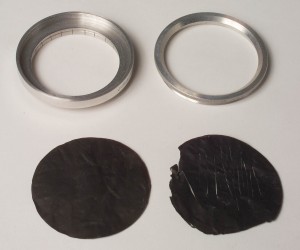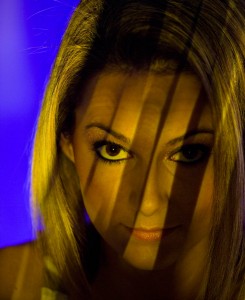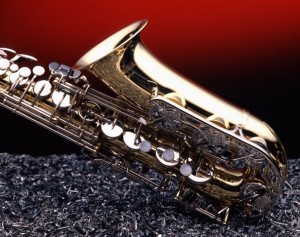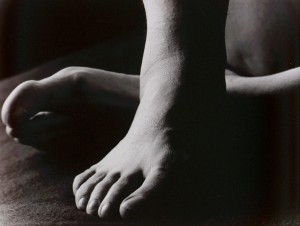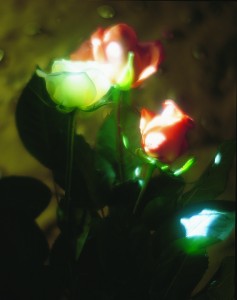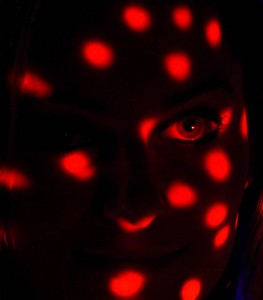
All the light is from the strobe projector using a cookie of little holes. I think the light in the eye makes this wonderfully effective.
And I am continuing the shameless plugs at the beginning of the blog. My book Understanding and Controlling Strobe Lighting: A Guide for Digital Photographers is on Amazon.com. It got as high as number 15 in photographic lighting books! And there was much rejoicing! But is is dropping now, so you need to buy a couple of copies, please! Here is a different sample chapter. Of course I still hope that you will consider purchasing my fine art book B Four: pictures of beach, beauty, beings and buildings. Frankly purchases of this book mean a lot to me, and it is also a fine gift for any occasion. As you know I teach for BetterPhoto.com. I really hope you’ll sign up my class: An Introduction to Photographic Lighting. Sign up are very good this month!
When we last saw this project, back in December, I showed some of the parts I used to make the projector. The most involved part is the tube that holds the lens and the series 7 filter holder. The
Series 7 filter holder is used to hold the cucoloris, or cookie, that creates a pattern, or a slide that is used to project an image. You can see where it fits on the image of the tube. The finished version of the tube is 4 inches long. There is a slot that is an inch and a half wide and 2 and a half inches long cut into the side. I cut the slot with a Dremel tool. This is quick, but you do need to be very careful. Dremel saw blades can break and fly at you. There are three other cuts made into the front of the tube that are the same light as the shot. These make the tube expand enough to hold the lens. On the other side I ground out the interior of the
tube enough to hold the filter holder. You could do the same thing with 52mm filters, but you would probably have to remove the glass filters. I used the Dremel tool to do the grinding. Dremel tools are very versatile. There is nothing special about the Series 7 filter holders, except that I had a couple of them that weren’t doing anything. You would probably need two 52mm filters so you could put the cookie or the slide between them. I made the cookies from cine foil. You would also need to cut a mask of cine foil if you wanted to project slides, to keep light from spilling out the sides. I cut the foil with and X-Acto blade and other tools. This tube is really the only significant part you’ll need to build and it isn’t terribly difficult. Although I did build four versions before I got it right.
The projector is not very bright, especially with a cookie or slide in place. At ISO 100 and 10 feet, without any cookie the meter reads f5.6, so the guide number would be 56. Most of the time you won’t be using the projector very far from the subject, so it is bright enough. By moving the lens in the tube it is possible to go from a hard edge, or if a slide a sharp image, to a soft edge, or if a slide a soft image. This gives you considerable control over the image. The difficulty is making changes to the projected image while shooting. If the projector is near the camera, as it was for the demonstration images, it can be reasonably convenient to shoot. If you are projecting a background or lighting the side of a subject than it is more difficult to arrange the image. A remote control release for the camera might be useful, or it might be helpful to work with an assistant. I am still working on ways to use the projector to create a background, which has been difficult. The problem with backgrounds seems to be the low power level of the
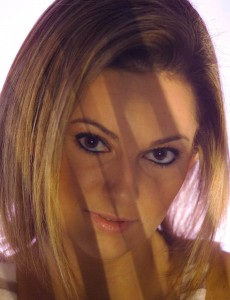
I really like the effect of the slits cut into the cookie. It is simple and effective. There is a filter over the projector and over the background light.
projector as well as the difficulty of getting it in place. Part of what makes this difficult is that when you are at the projector you can’t also be looking through the camera, so what looks right might not be right.
The samples this week were made with simple cookies. One is slits cut into the cine foil and the other is just holes. I used filters over the projector lens for color. On a couple of the shots I put a strobe behind the subject to add light to the background. I used colored gels on the background light as well.
I still offer a class at BetterPhoto, I hope you’ll consider taking it: An Introduction to Photographic Lighting And please consider my book: Understanding and Controlling Strobe Lighting: A Guide for Digital Photographers.
